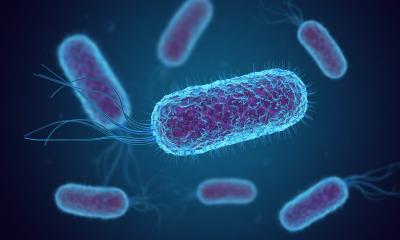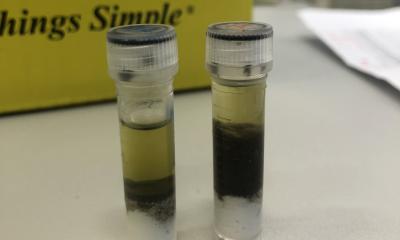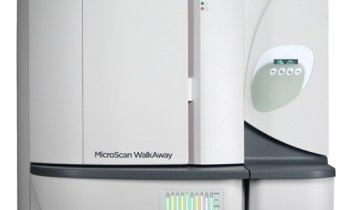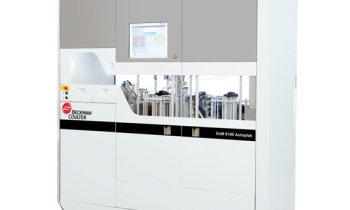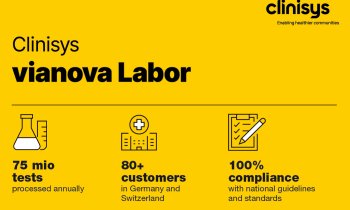Image credit: Beach Guardian
News • Dissemination of antimicrobial resistance
Microplastics serve as hideout for AMR bacteria, study finds
A new study shows that microplastics in the natural environment are colonised by pathogenic and antimicrobial resistant bacteria. The study team calls for urgent action for waste management and strongly recommends wearing gloves when taking part in beach cleans.
The study was published in the journal Environment International.
Microplastics are plastic particles less than 5mm in size and are extremely widespread pollutants. It is estimated that over 125 trillion particles have accumulated in the ocean (surface to seabed) and they have also been detected in soils, rivers, lakes, animals and the human body.
An emerging concern associated with microplastics are the microbial communities that rapidly make their home on the particle surface, forming complex biofilms known as the “Plastisphere”. These communities may often include pathogenic (disease-causing) or antimicrobial resistant (AMR) bacteria.
Our research shows that microplastics can act as carriers for harmful pathogens and antimicrobial-resistant (AMR) bacteria, enhancing their survival and spread
Pennie Lindeque
Wastewater treatment plants or solid waste landfill sites have been proposed to spread, boost or influence the evolution of antimicrobial resistance and pathogens in nature. This may well increase the risk to human health and it is therefore vital that more is understood about the interactions of the bacterial communities within the Plastisphere and other marine pollutants, such as domestic and clinical wastewater. Lab studies have shown that some commonly-discarded plastic materials serve as a platform for the selective growth of bacterial communities responsible for AMR and diseases in both humans and animals. Whilst previous work has explored this in the environment, several questions and issues remained unanswered, which this new study aimed to address.
The study team, led by Dr Emily Stevenson and involving scientists from Plymouth Marine Laboratory and the University of Exeter, developed a novel structure that would allow five different substrates (bio-beads, nurdles, polystyrene, wood and glass) to be secured along a waterway that was expected to decrease in anthropogenic pollution downstream.
Recommended article

News • Hidden habitat for Listeria, E. coli and more
Microplastics help pathogens survive wastewater treatment
Wastewater treatment fails to kill several human pathogens, such as Listeria or E. coli, when they hide out on microplastics in the water, according to a new study.
Dr Emily Stevenson, lead author and PhD researcher with Plymouth Marine Laboratory and the University of Exeter at the time of the study, said: “Following the recent concerning release of sewage bio-beads in Sussex, this timely study highlights the pathogenic and AMR risk posed by microplastic substrates littering our ocean and coasts. By identifying high-risk substrates, we can improve the monitoring of those, or even phase them out for safer alternatives.
“This novel research used a specifically-designed incubation structure that helped reduce bias from biofilm communities growing on cages, bags or boxes used to secure microplastics in traditional studies. Our study fixed these news structures along a transect from the clinic to marine waters and our findings clearly show the importance of this multiple environment transect. Previous studies have detected AMR and pathogen colonisation high pollution zones but we show that other surface waters can harbour communities with a high proportion of AMR. As this work highlights the diverse and sometimes harmful bacteria that grows on plastic in the environment, we recommend that any beach cleaning volunteer should wear gloves during clean ups, and always wash your hands afterwards”.

Image source: Stevenson EM, Buckling A, Cole M, Hayes A, Lindeque PK, Murray AK, Environment International 2025 (CC BY 4.0)
Professor Pennie Lindeque, co-author and Head of Group for Marine Ecology and Society at Plymouth Marine Laboratory, said: “Our research shows that microplastics can act as carriers for harmful pathogens and antimicrobial-resistant (AMR) bacteria, enhancing their survival and spread. This interaction poses a growing risk to environmental and public health and demands urgent attention. By tracking a source-to-sea pathway influenced by hospital and domestic wastewater discharges, our study shows how antimicrobial-resistant pathogens colonised all substrates. Protected within their biofilms, each microplastic particle effectively becomes a tiny vehicle capable of transporting potential pathogens from sewage works to beaches, swimming areas and shellfish-growing sites.”
Recommended article

Article • Bacterial defense mechanism
Antibiotic resistance: a global threat to healthcare
Antimicrobial resistance (AMR) is becoming more prevalent around the world, constituting a serious threat to public health. When bacteria acquire resistance against antibiotics, common medical procedures – for example, in surgery – become impossible due to the high infection risk. Keep reading to find out about AMR research, development of new antibiotics and antibiotic alternatives.
Dr Aimee Murray, co-author and Senior Lecturer of Microbiology at the University of Exeter, concluded: “Our research shows that microplastics aren’t just an environmental issue – they may also play a role in the dissemination of antimicrobial resistance. This is why we need integrated, cross-sectoral strategies that tackle microplastic pollution and safeguard both the environment and human health”.
The study team emphasises the need for further research into how microplastics interact with co-occurring pollutants, and for improved waste-management practices to reduce the spread of AMR and pathogenic organisms in the environment.
Source: University of Exeter
27.11.2025



